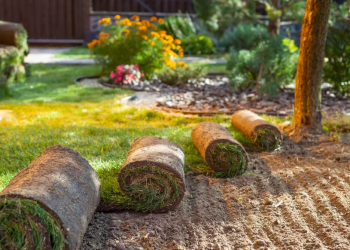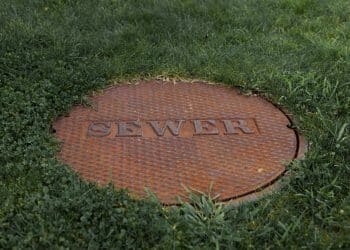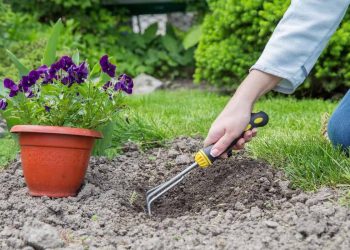Table of Contents

Do you have a passion for gardening? Perhaps you don’t know what tools to use or how to improve your planting skills. Gardening can be a rewarding and calming experience. Growing your own veggies can improve your overall health as well.
In order to create a healthy garden though, you have to use the right set of tools. Using the right gardening equipment can even impact the condition of your garden’s soil. If your gardening tools aren’t sharpened enough or you’re overwatering your plants, you can actually do more harm than good. Lucky for you, we have you covered. Here are 9 gardening tools all gardeners must have on hand.
A Raised Garden Bed
One of the most important tools to use when planting your flowers is to invest in a raised bed garden. These raised structures usually rest on top of your already installed soil. These usually wooden or plastic structures can either be a few inches tall, mid height or higher. Rather than traveling back and forth across your garden, you can just walk around it.
That way you won’t have to deal with issues of compacted soil, waterlogging problems, or rats eating up your vegetables. You can even stop a disease from infecting your flower bed. A garden bed promotes loose soil and allows you to install drip irrigation systems to help your plants flourish. You can also use a mesh tarp for safety of your plants by high sun lights.
When setting up your raised garden bed, choose a location with ample sunlight, install soaker hoses to prevent it from drying out and use compost to keep your soil healthy.
Ground Protection Mats
Additionally, Ground Protection Mats promote better health for your garden. Some styles are made of materials that allow the sunlight to penetrate your garden bed and cater to a healthy growth for your plants. Another great perk is that they’ll shield your garden from heavy foot traffic and also prevent soil compaction.
There’s a few ways to put them to good use. Before throwing on your mulch, lay your Ground Protection Mats for heavy equipment down over your soil to prevent the growth of weeds. You can also cut your mats to fit certain areas around your garden. This also better protects your soil from sustaining any type of damage.
When installing your Ground Protection Mats, make sure you do everything from mapping out the area you plan to install your mats to testing them for stability over the ground.
Drip Irrigation Systems
Drip Irrigation Systems also come as a handy gardening tool for gardeners. Basically, you integrate a series of tubes with emitters throughout your ground that run alongside your plants. In particular, the emitters deliver water directly to your plant’s roots, ensuring they’re getting the nutrients they need.
Some advantages to using a Drip Irrigation System include a reduction in weed production, reduces water waste, and it’s energy-efficient.
If you want to install your own system, you can order kits that come with installation instructions. Some require a water pump while others are foolproof.
Maintaining watering systems can be just as important as setting up your watering systems. Regularly inspect them to ensure they’re watering your plants properly. Replace or repair any damaged parts immediately to ensure the system remains in working condition. Using these water harvesting systems can yield great results for your garden but only if they are installed properly and cared for on a regular basis.
A Compost Bin
Though, no garden is complete without a good batch of compost. Considered the “black gold” to every gardener, this natural mixture has all the nutrients your plants need to survive. A good mixture will consist of your green and brown materials. That could be anything from your carrot scraps, cow manure, straw or tree branches.
These materials contain traces of nitrogen and carbon which your plants need to thrive. It can take a while for your compost to “cook” before it can be mixed into your soil. To get you started, a couple of compost bins to try out are food waste digesters, electric countertop composters and worm bins. You can’t start a garden with a good compost bin.
Hand Trowel & Pruners
Secateurs also known as Pruning Shears are crucial to ensuring the proper care of your plants. Though, a well-maintained garden is only as good as its Pruning Shears. Make sure that your tool is maintained on a regular basis and sharpened as well. A dull pruning shear will only damage your plants.
The same goes for a Hand Trowel. Your gardening toolkit won’t be complete without it. However, a Hand Trowel that isn’t properly cared for will also negatively impact your garden bed. Trowels play a major role in weeding out weeds and transplanting bedding plants and herbs. There’s several different Hand Trowels out there on the market but the best ones are made from stainless steel and are ergonomically friendly.
A Lawn Mower
Investing in a lawn mower will also ensure you have a well-manicured garden. Consisting of a motor, several cutting blades, and a wheeled base, this gardening tool will trim your grass to the desired height. Your lawn mower evenly cuts your grass, promoting a neat and healthy lawn. This tool will prevent overgrowth and weeds from plaguing your flowerbed.
It saves time and effort working outdoors as well. A few lawn mowing tips to ensure a healthy garden are keeping the blades nice and sharp, mowing weekly during the growing seasons and mow higher in hot weather. A lawn mower will help you trim your grass more efficiently and promote better overall growth of your plants.
Gardening Gloves
Gardening Gloves are one of the most common tools used by gardeners. No matter if you’re planting, weeding, composting or harvesting, you should definitely have on a pair of gloves. They protect your hands from nicks, blisters, cuts, scrapes, insect bites and even fungal infections contracted from certain plants.
In fact, there’s several different types of gardening gloves on the market. Leather Gloves are waterproof and will protect your hands from thorns. On the other hand, Rubber Coated Gloves are more ideal to use when working with chemicals like fungicides and pesticides.
Neoprene Gloves offer the same protection as Rubber Gloves, but avoid getting your fingers snagged by a nasty thorn. Unfortunately, Cloth Gloves offer no real protection other than keeping your new manicure intact. In any case, you should invest in a pair of gloves that work best for your gardening project.
A Hose & Watering Wand
Other watering systems include a watering hose and wand. When using a watering hose, it’s important that it reaches and sprays every inch of your flowerbed. There’s different types of hoses you can use, such as one with an adjustable nozzle, a vinyl hose, and a store hose.
Rather than hosing down your plants, you can offer them a gentle “rain shower” with a watering wand. The extended design gives you access to hanging plants or hard to reach containers. A few styles include Shower Head Wands, Fan Nozzle Wands and Telescoping Wands.
When watering your plants, be sure to use a soaker hose for plants that have deep, burrowing roots. You can even water them from the top or bottom, depending on the type of plant you’re working with. At the end of the day, make sure that your flowers receive the moisture and nutrients they need.
A Water Can
You can also invest in a few watering cans if you prefer to manually water your plants. They come in all different kinds of styles, sizes, colors and offer tons of nozzle options. A few ways to help you choose the right can is by knowing the size of your plants and your garden bed.
For instance, larger plants typically require a 3 to 5 gallon water can. If you have houseplants, use a light metal can with a narrow spout to provide precision when watering your flowers.
Moreover, using a Water Can can offer stability for senior citizen gardeners and allow you to water your plants that are in hard to reach places. Some detachable nozzle styles even prevent soil erosion.
When using a Water Can, you should keep a few tips in mind such as regularly cleaning your Water Can and watering them at close range. Keeping tips like this in mind will ensure you are using your Water Can properly.
Investing in the gardening tools on this list are essential to the survival of your plants and flowers. Everything from a Raised Garden Bed, Lawn Mower to a Water Can can ensure a healthy development of your vegetation. Besides using these tools, maintaining them is just as important.
If your Pruning Shears aren’t sharpened enough or there’s a broken component in your Drip Irrigation System, then you could potentially damage your plants. You should never skip on cleaning, sharpening or replacing your garden tools. In the end, having these 9 garden tools and making sure they’re properly cared for will surely provide you the garden of your dreams.
Author
Aja Dandridge
Aja Dandridge is a Content Writer who’s written for several publications on various topics, including e-commerce products, home renovation tips and new gardening techniques.







